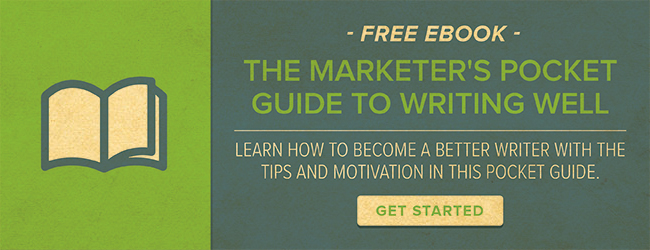 The definition of a whitepaper varies heavily from industry to industry, which can be a little confusing for marketers looking to create one for their business. The old school definition comes from politics, where it means a legislative document explaining and supporting a particular political solution. In tech, a whitepaper usually describes a theory behind a new piece of technology. Even in the business world, there are a variety of definitions — some more product-centric than others.
The definition of a whitepaper varies heavily from industry to industry, which can be a little confusing for marketers looking to create one for their business. The old school definition comes from politics, where it means a legislative document explaining and supporting a particular political solution. In tech, a whitepaper usually describes a theory behind a new piece of technology. Even in the business world, there are a variety of definitions — some more product-centric than others.
We’re here to arm you with the best definition of a whitepaper in the context of business and marketing.
What Is a Whitepaper?
A whitepaper is a persuasive, authoritative, in-depth report on a specific topic that presents a problem and provides a solution.
Marketers create whitepapers to educate their audience about a particular issue or explain and promote a particular methodology. They’re advanced problem-solving guides. Typically, whitepapers require at least an email address for download (usually they require information more than that), making them great for capturing leads.
What Is a Whitepaper Not?
A product pitch.
Although Investopedia defines a whitepaper as “an informational document issued by a company to promote or highlight the features of a solution, product, or service,” be warned that overtly shilling your own stuff could turn off your readers. The goal of a whitepaper is to inform and persuade based on facts and evidence, not tell the world why your product is the best and they need to buy it now.
What Are the Industry Standards?
Technically, there are no minimum requirements for whitepapers. Anyone can call anything a whitepaper — this doesn’t mean you should, though. Without some boundaries on what is and what isn’t a whitepaper, we risk confusing our audience and losing credibility. Here’s what an A+ whitepaper looks like:
- Length: No fewer than six pages, including illustrations, charts, and references. Can be upwards of fifty if the topic requires that much detail. (Chances are, it won’t.)
- Structure: There is usually a title page, table of contents, short executive summary (optional but helpful), introduction, several pages educating the reader about the problem, several pages hypothesizing a solution, several pages offering an example of a company that used that solution to achieve results, and a conclusion.
- Density: Denser than an ebook. Whitepapers aren’t usually easy to skim — in fact, readers usually need to read them over more than once to get every morsel of information out of it.
- Format: PDF in portrait orientation (8.5″ by 11″).
- Style: Professional, serious, well written, and well edited. I’d recommend hiring a graphic designer to design page layout, images, fonts, and colors as well.
How Are They Different From Blog Posts and Ebooks?
Whitepapers are the academic papers of marketing content. Readers expect a high degree of expertise backed by solid research that is fully documented by references. Whereas writing blog posts and ebooks can take anywhere between a few hours and a few weeks, a good whitepaper can take between a few weeks and a few months to write and polish. They’re much more serious in tone, less flashy, and more heavily research-based than blog posts and ebooks.
You can imagine this makes them kind of boring in comparison — truthfully, most people don’t actually want to read whitepapers, but they do it anyway because they tend to be particularly detailed and informative, authoritative, and written by industry experts. Or their boss told them to.
So, if whitepapers are so boring, why do marketers create them? Well, they’re a great resource for your prospects and sales team, and they help you build credibility and trust with your readers. Also, people who choose to download whitepapers often are further into the customer buying cycle.
Imagine you work for a company that sells kitchen cleaning equipment to restaurants and you write a whitepaper about the maintenance and inspection of commercial kitchens. That whitepaper is probably chock full of information about legal requirements for exhaust systems, cooking equipment, and cleanliness documentation that could put even the biggest kitchen maintenance enthusiast to sleep if read cover-to-cover. But it also serves as an incredibly useful reference for restaurant owners who want to know how to maintain their kitchens to pass inspection. Once they know how clean they need to keep their kitchens, then they’ll probably buy some expensive cleaning equipment from you because they see you as a helpful, detail-oriented, credible source.
(But sometimes ebooks are a better way to share in-depth content online: Find out why.)
![]()







